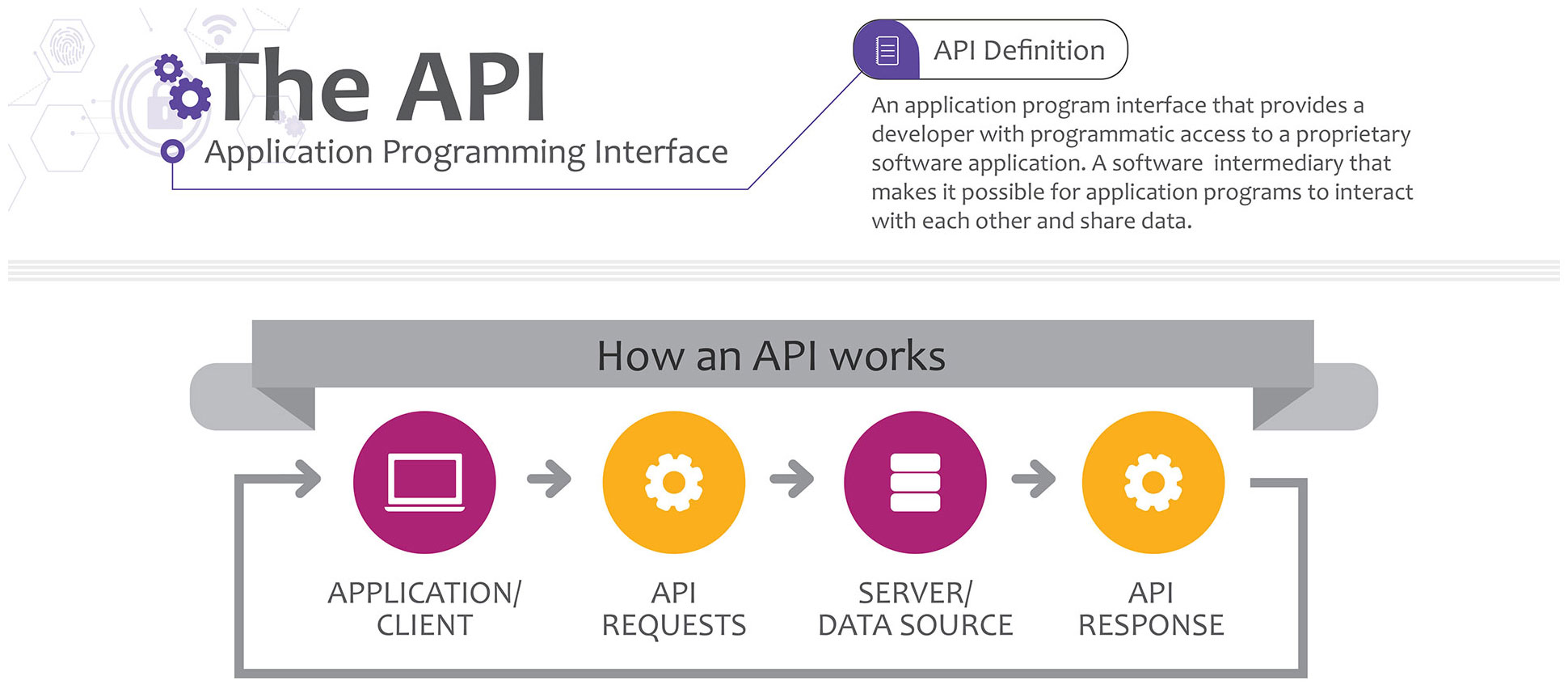
API - Application Programming Interface
- APIs In Technical Jargon
An application programming interface (API) is an interface or communication protocol that allows information to be passed between different computer systems or between the different parts of a computer system. Another way of looking at it is that an API specifies how different software components should interact with each other. Thus, an API has routines for building software applications. The aim is to simplify the implementation and maintenance of software. APIs are used for linking together websites, operating systems, databases, computer hardware and software libraries. Additionally, APIs are used when programming a graphical user interface (GUI). API-based solutions make life simpler and easier. Data from solution providers is available in real time and nothing is lost in transit.
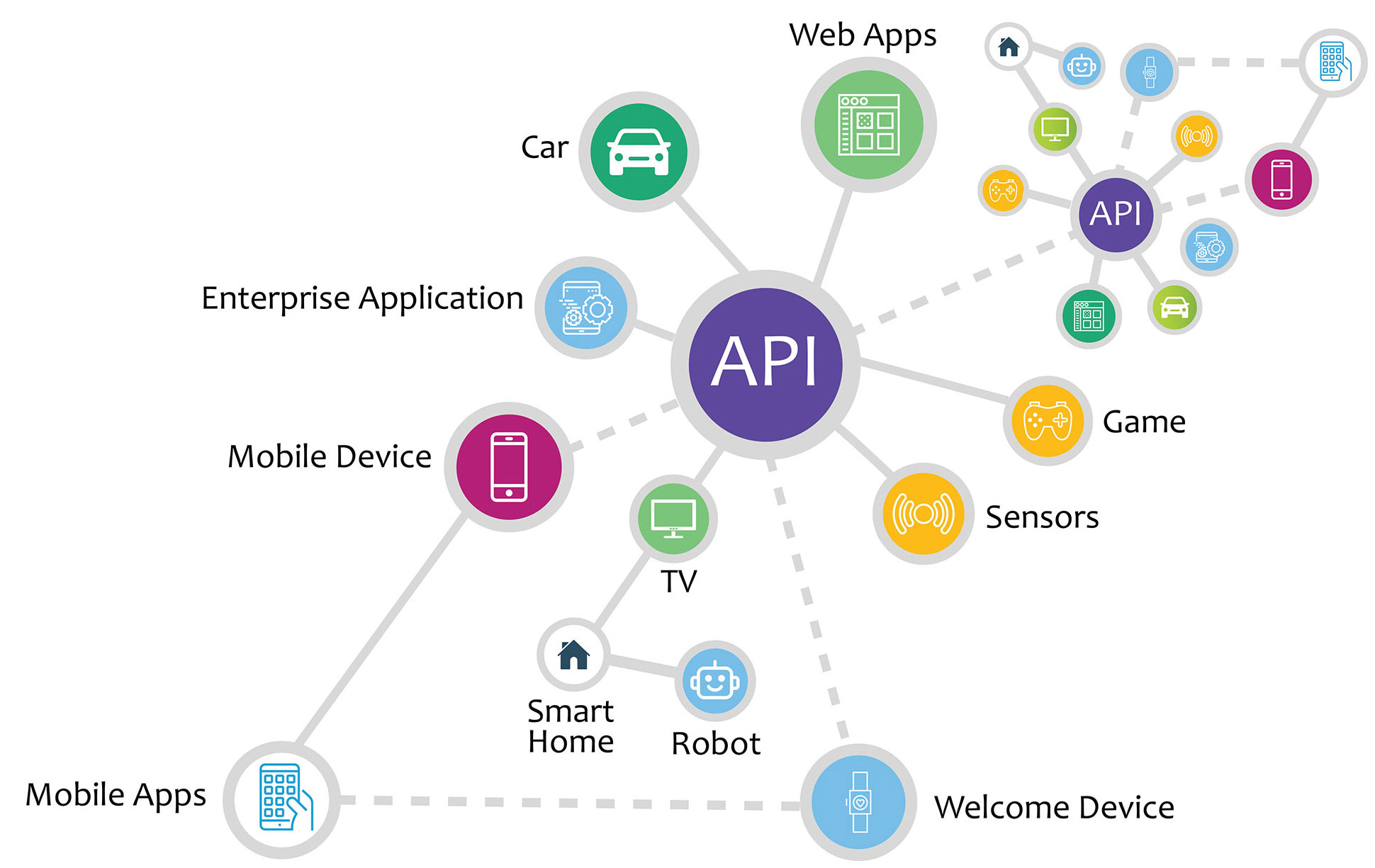
Different Software Components Interaction with API
- APIs For The Layperson
An API is a software intermediary that allows two computer applications to talk to each other. In other words, an API is like a messenger who delivers your request for information to somebody and then delivers their response back to you.
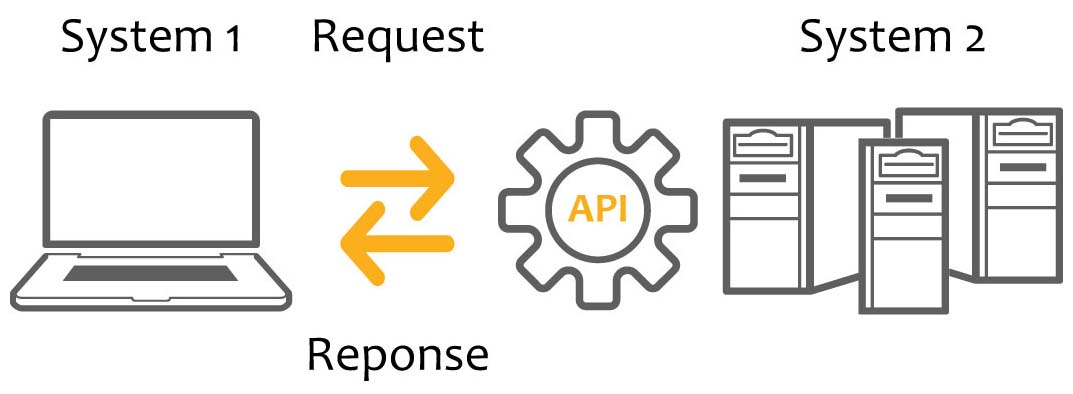
For example, users can search Trivago for data about hotels. Trivago uses an API to request specific data from the hotels in real time, which is then formatted and displayed to its users.
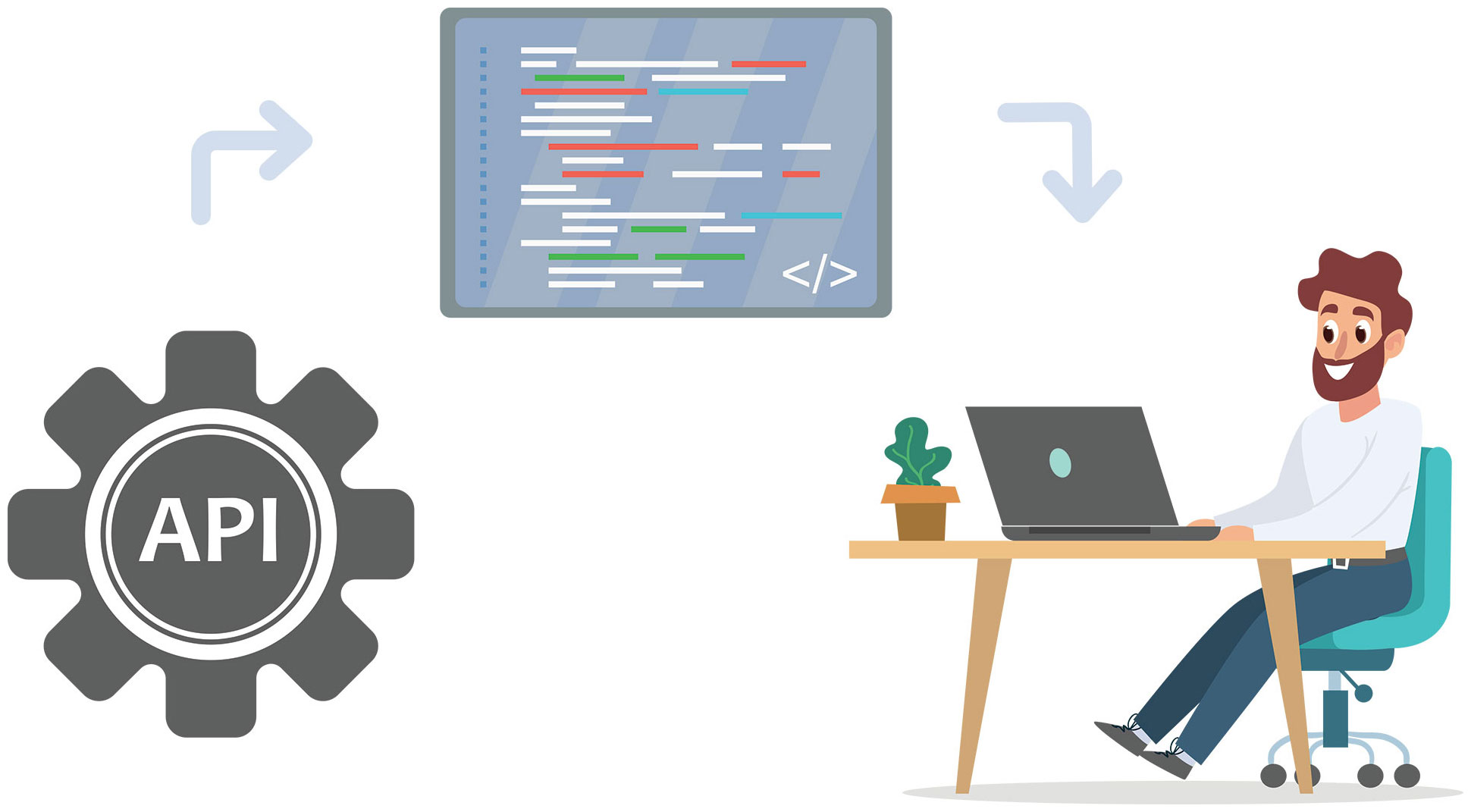
Application Programming Interface
So, an API is a tool set that programmers can use to create software applications. Another example is the API in Apple’s iOS that is used to detect and process touchscreen interactions. APIs are tools. They allow programmers to deliver solid solutions fairly rapidly.
With the development of apps for mobile devices, organisations can give users access to and collect information through apps and not just through the internet. Within the public sector, APIs allow different agencies to share information and to let the public interact with government bodies.
- APIs In Shipping And Logistics
In the shipping and logistics industry, API-based solutions have been in use for a while. The number of applications is steadily growing with the advent of new technologies and solutions. The most common example of an API in shipping and logistics is the track-and-trace or tracking utility provided by various service providers. A tracking API allows shipments to be tracked by reference, package or shipment number. Thus, APIs are used by apps and websites to display details and the status of shipments.
Another classic example is when a shipping agent sends an updated vessel profile to Directorate General of Lighthouses and Lightships (DGLL), customs and other statutory agencies. In the standard process, the vessel’s profile, as updated by the shipping agent in the Port Community System (PCS), is sent to customs and DGLL via an email or by giving access to a computer folder. However, the data may not arrive if it is copied incorrectly, if the email address is wrong, if it gets corrupted somewhere or it is accidentally deleted. In this case, the shipping agent will not be able to pay the lighthouse dues and so will not be able to berth the vessel, which will result in losses.
Using an API-based system to exchange data totally eradicates such risks, since PCS can use the API to send the data in real time to customs and DGLL. Even if the message gets lost or something happens to the data, the recipient (customs or DGLL) can send another request for the data via the API to PCS and instantly receive a response. Thus, vessel profiles are always available to the statutory bodies.
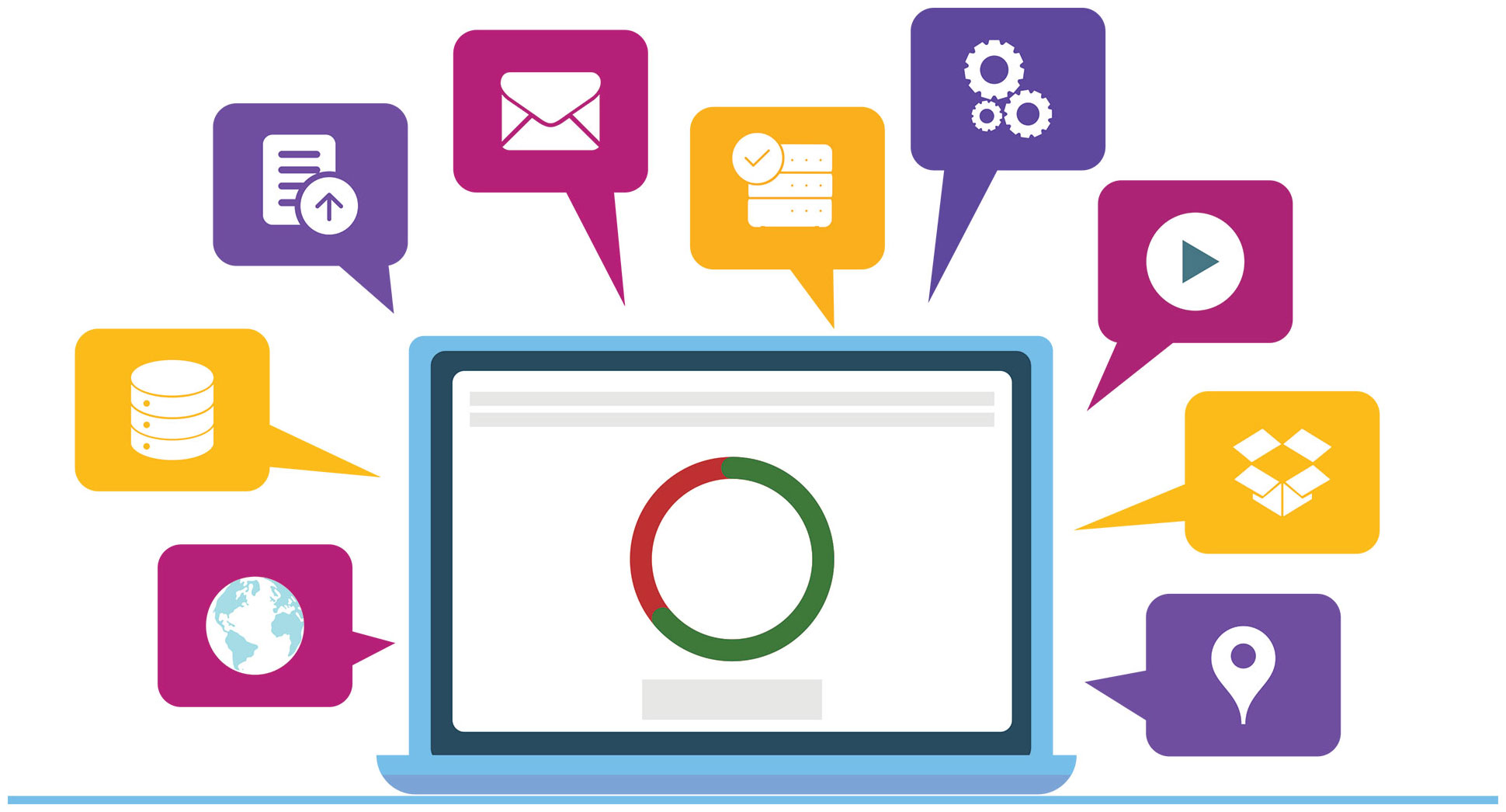
APIs In Shipping And Logistics
- API-Based Data And Message Exchange Between Customs And PCS 1x
One of the key pain points in the industry was the non-availability of the data held by customs on vessels and also the lack of data from customs for Import General Manifests (IGMs), amendments and so on. These issues have been taken care of with an API-based message exchange. IceGate and PCS 1x talk to each other via an API. Data is exchanged between them in real time (push) and as required (pull). Thus, updates are sent automatically to other systems (push) so that they are available to the various stakeholders. Moreover, if some data is missing, it can be requested (pull). All relevant data is 100 per cent available to both systems, making the processes more efficient.
- API-Based Data And Message Exchange Between FOIS And PCS 1x
Formerly, Freight Operations Information System (FOIS) and now Centre for Railway Information Systems (CRIS), the railway freight management system, exchanged data on wagons with other systems, such as PCS 1x, every 3 to 4 hours. With the new API-based methodology, data is exchanged in near real time. As soon as the data is updated in FOIS, it is sent to PCS 1x, which in turn sends it to relevant stakeholders in real time. Thus, FOIS no longer needs to send data to each stakeholder individually.
- Benefit of APIs
- APIs make data management more efficient
- APIs bridge the gap between two computer systems.
- APIs make it easy to integrate multiple systems.
- APIs can provide personalised data for each stakeholder.
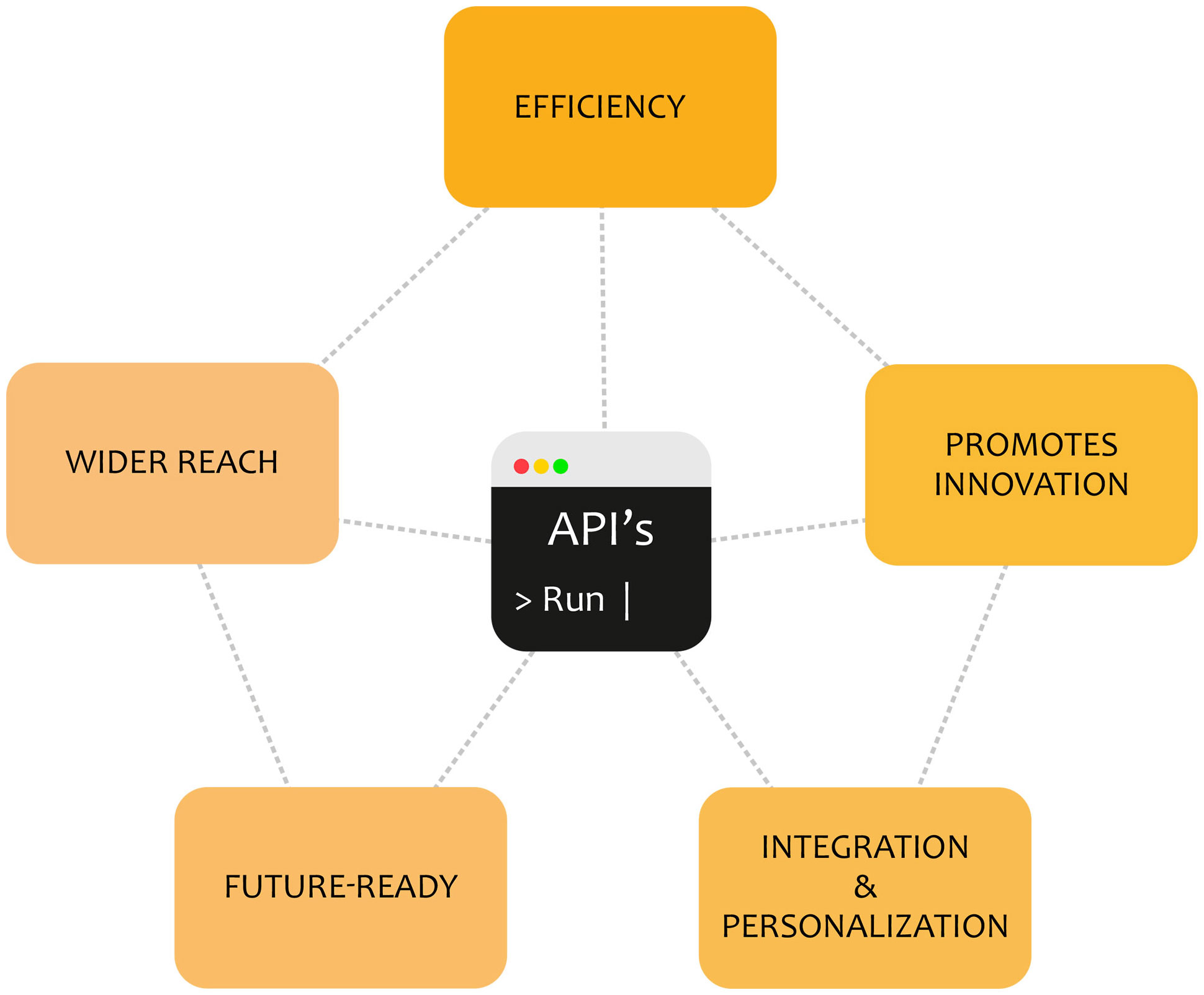
Benefit of APIs
Overall, APIs save time, reduce the effort required and reduce costs, thus improving customer service and satisfaction.